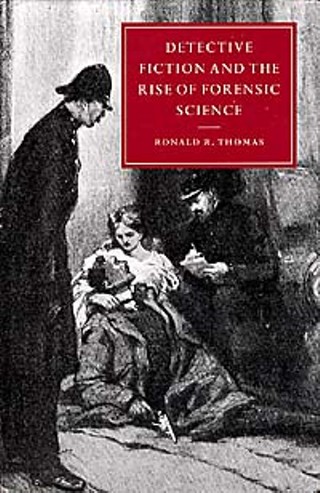Book Reviews
Recent Titles Reviewed
Fri., Oct. 20, 2000

Detective Fiction and the Rise of Forensic Science
by Ronald R. ThomasCambridge University Press, 341 pp., $59.95
Detective Fiction and the Rise of Forensic Science is one of those tomes that surfs through the musty origins of a popular art form -- in this instance, the 19th-century detective tale -- and uncovers fresh gems for our contemplation. The author's mantra is that "the human body is a text," by which he means that the human body has been irrevocably converted into a text by the application of forensics and therefore contains a veritable archive of arcane and esoteric information that must be decoded by experts through the lens of science and technology. This process has been so swift and pervasive as to be rendered nearly invisible so that we don't really notice it anymore. But an examination of the forensic identification of human beings speaks volumes about who we are, how we behave, and how we got that way.
Thomas uses examples from classic whodunits to support his thesis and performs a psychohistorical analysis of them as if they were mass dreams spurted out of the collective unconscious. He seems to delight in pointing out how the progenitors of the detective tale were well ahead of the curve, and in many instances, anticipated the use of certain devices in forensic science, as if to suggest that they actually invented -- at least conceptually -- many of them. And so the book is structured around the troika of 1) the lie detector, 2) the mug shot, and 3) the fingerprint. Thomas states quite bluntly, for example, that Edgar Allen Poe invented the lie detector in his 1843 short story "The Tell-Tale Heart." Poe's unreliable narrator hallucinates the sound of his slain victim's heart beating at a high volume. Yet it was actually the narrator's own heart pounding away at his eardrums that had been projected to the spot under the floor where the victim was hidden. And so it was the narrator's physiological reactions that functioned as a lie detector that revealed the truth. This idea entered the realm of fact about 50 years later when a forensic anthropologist extrapolated on the principle of the stethoscope and fashioned it into a device that could monitor changes in the blood pressure of a suspect during an interrogation. In this way, the author emphasizes once again, the human body is converted into data that reveals a previously hidden truth.
Thomas examines the symbiotic relationship between the origins of photography and the detective tale in the 19th century, suggesting that one could not exist without the other. Most pertinently, he gives examples of how the earliest and most prominent literary sleuthhounds such as Sherlock Holmes and Inspector Bucket from Dickens' Bleak House are actually described as functioning and even looking like cameras. The numerous drawings and photographs of Holmes in his various incarnations looking through a magnifying glass function as a case in point. The author goes on to explain that as a forerunner of today's miniature espionage cameras, there was a device sold during the 19th century that was called a "detective camera." Thompson does make a minor blunder in this section, however, when he cites Michel Foucault's all-seeing panopticon as a model for these literary shamuses without mentioning that it has since been revealed that the contraption never existed outside the realm of Foucault's own fecund imagination.
Thomas has done a commendable job here, but it would seem that he could have at least included an epilogue connecting the dots to the contemporary world of forensics. He does briefly mention DNA analysis, which, as an extension of the principles he has examined, often brings up more questions than answers. The O.J. Simpson saga, for example, would seem to incorporate his triumvarite structure with the mythical failed lie detector test, the touched-up photograph of the reigning suspect that appeared on the cover of a national weekly newsmagazine, and, of course, the legendary bloody glove that didn't fit. But in spite of such minor quibblings, the book itself, if not just enlarging the knowledge of the inner mechanisms of the detective tale to its practioners and fans alike, might even awaken in the mind of an avowed non-fan an appreciation of this mega-meme that has shaped and continues to shape our perceptions of the world and of ourselves.






